It’s Swiss chard season, Baby! Growing and cooking Swiss chard is simple. I’ve found this to be one of the easiest things to grow in the garden. It’s not finicky, and this lush leafy plant, with it’s beautiful green leaves and colorful stems, is a low calorie food packed full of nutrition. It is also reportedly high in calcium and WebMD states that just one cup of Swiss chard has 35 calories, and 300% of the daily value for Vitamin K. Want to know how to prepare quick Swiss chard from garden to table? Read on…
Overall, it’s simple to grow, harvest, and prepare for meals. Even better, if your Swiss chard is planted in a location where it’s happy and thriving, you may enjoy the leaves of this plant for longer than the normal season. While it’s packed full of nutrients, the flavor of this plant makes it versatile for many recipes. Some enjoy it raw, and others prefer it cooked. I’m going to share 2 ways of cooking Swiss chard.
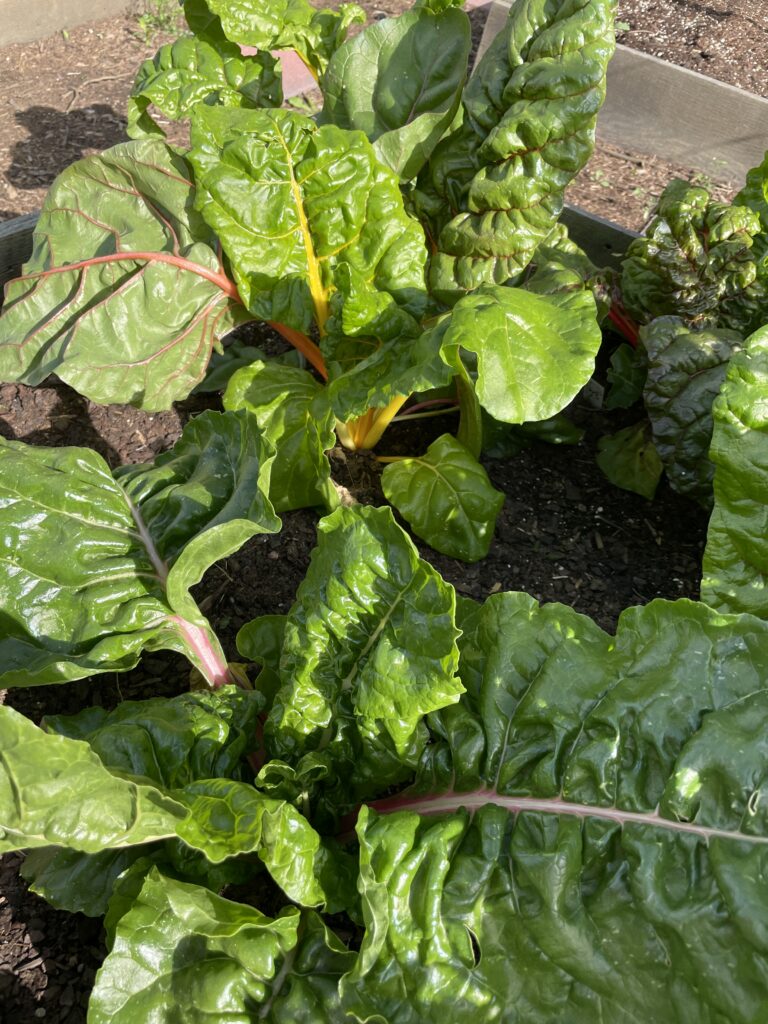
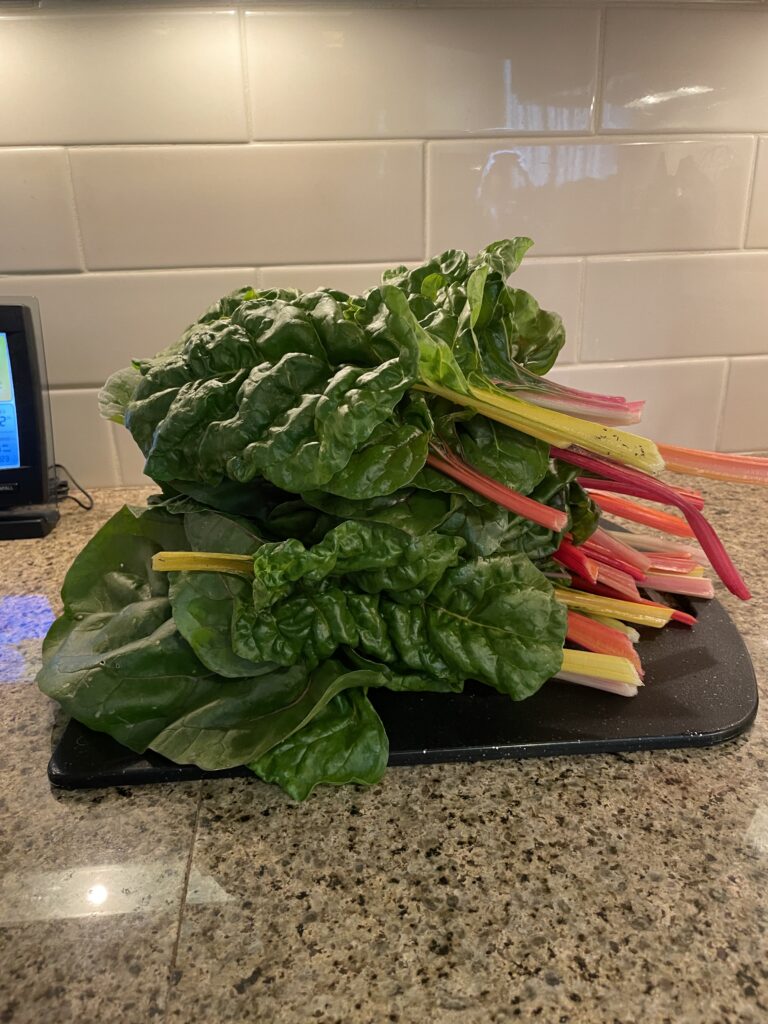
Leaf & Stem Selection and Cleaning
When you harvest the Swiss chard leaves, chose the larger ones, and leave the smaller leaves to mature for the next harvest. Cut at the base of the stem, close to the ground, so you can have as much of the stem as possible.
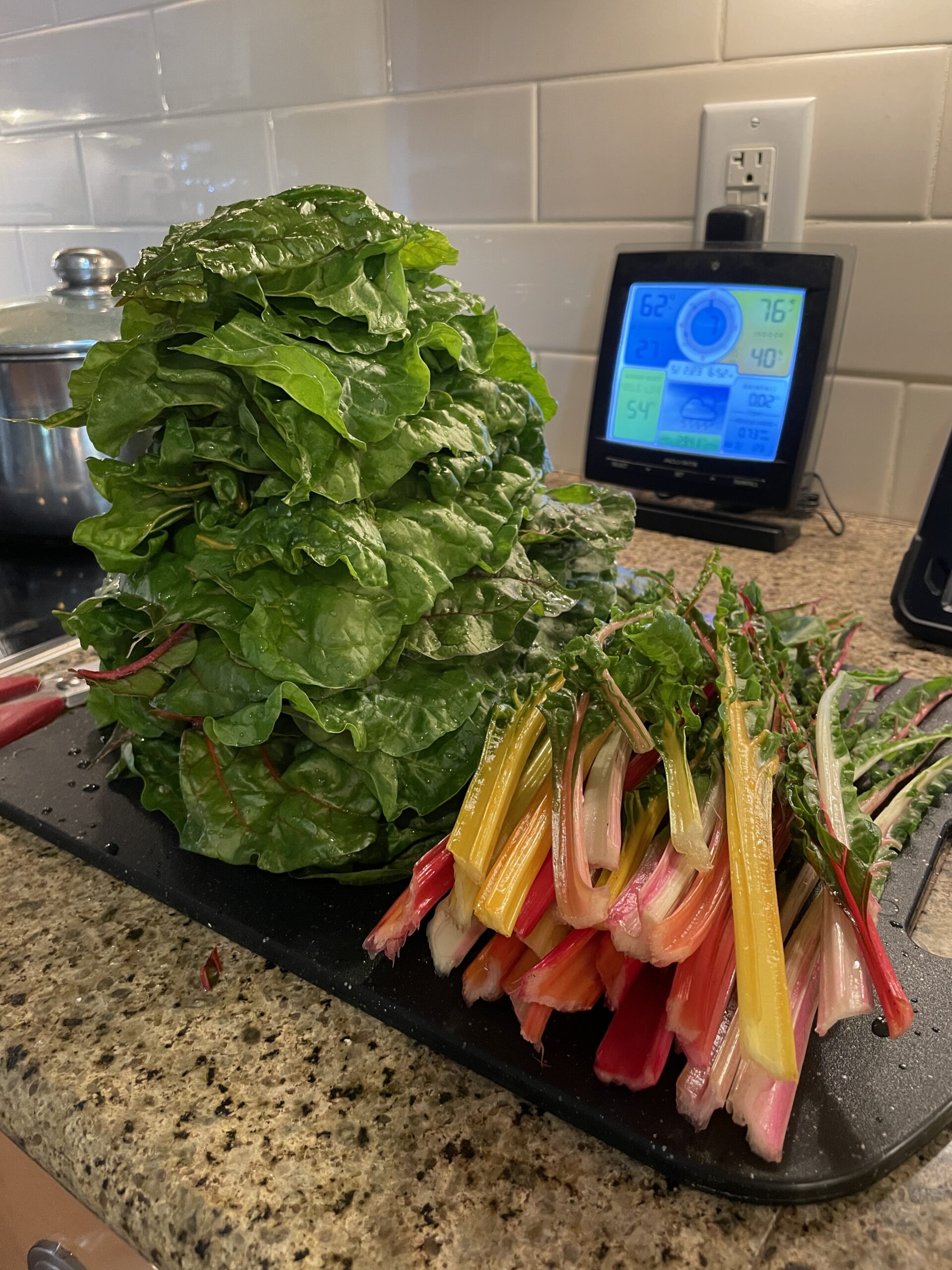
Rinse the leaves and stems well. Since I only grow organic produce, my leaves have some bugs if I look up close. Therefore, it’s important that I take the time to thoroughly clean my leafy greens. I like to rinse leaves in a bowl several times, and then rinse them in a colander.
Next stop…stems! These beautiful stems range in a variety of colors, and really add contrast to a meal. To remove the stems, just fold the leaf over and cut the stem out with one straight cut. Stack the leaves and stems in separate piles.
Stem Preparation & Cooking
Let’s get cooking! Begin with the stems. When cooking Swiss chard, know that the stems can be diced and sautéed. This is done first because the stems take longer to cook than the leaves. Nothing is wasted! That’s one of the many things I love about growing and cooking Swiss Chard. It also has a great texture.
As shown below, I diced the stems and sauteed them in a little olive oil, with a diced onion. As the stems cook, and begin to tenderize, I find it beneficial to add in a little broth. Pour in about an ounce or so at a time, covering the pan with a lid while the stems soften.
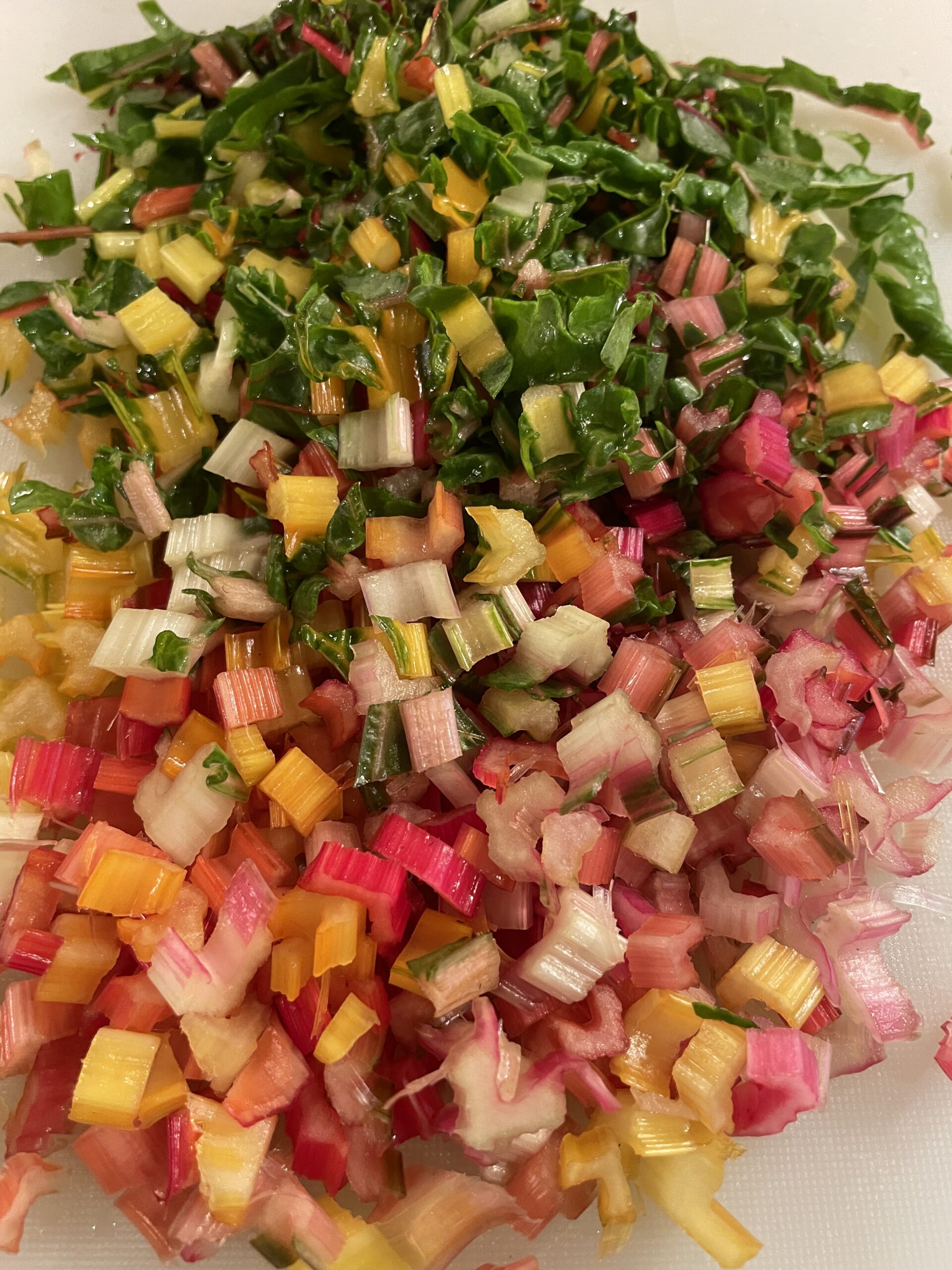

Leaf Preparation & Cooking
Now, let’s prep the leaves. While the stems are sautéing, roll leaves into tight stacks and slice. My stacks of leaves are about 7-9 high. There’s a method that ensures the prep process is quick. After slicing your leaves, check the doneness of your stems. If you’re satisfied with their tenderness, place your sliced Swiss chard leaves on top of the stems in the pan. Stir and cover with a lid.
Next, wait 5 minutes and add fresh garlic. For the amount harvested above, I only added 3 cloves. Some love the flavor of garlic, and others prefer not to know it’s even there. Personally, I don’t even taste it. I think it just benefits the synergy of the flavors.
Cover and begin cooking the leaves down to the desired tenderness. I prefer a little texture, rather than soft and soggy. Periodically, check to determine if more olive oil, broth, or salt and pepper is necessary.
Short Harvest to Table Video
Here’s a short video that pulls it all together from start to finish.
Garnishes for Quick Swiss Chard
You may opt to eat the Swiss chard as a side or main course, garnishing it with your favorite topping such as pine nuts, bacon, cooked mushrooms, Parmesan, apple cider vinegar, red wine vinegar, or just good ole’ salt and pepper. I’ve found the salty flavors of bacon, prosciutto, or pancetta each offer a great contrast in flavor.
Swiss Chard & Pasta
My kids enjoy a hearty pasta meal. It’s comfort food to them. Pasta mixed with a cream sauce tastes great when combined with the flavors of Swiss chard and bacon. Likewise, you might decide to accompany Swiss chard with a protein, rice, quinoa, or even couscous.
Below (left) Swiss chard is mixed in pasta that is combined with a cream sauce. The sauce is not complicated to make, and can literally be blended together in a couple of minutes. This sauce has been my go-to when I need to whip up something quick for the kids. It allows me to avoid processed foods that would otherwise be convenient.
Pasta Cream Sauce
To make the sauce, I start with several tablespoons of butter melted in a pan. Next, I use about 2/3 cup of heavy cream, 2/3 cup of Parmesan, and salt and pepper to taste. I keep my stovetop temperature low, so not to scald the dairy.
Swiss Chard & Pasta with Bacon
Swiss Chard & Pasta Topping
I topped this recipe with cooked bacon. I’ve found that many children and adults really enjoy this pasta recipe. A drizzle of balsamic over the pasta mixture gives it that zip and zing that sets it apart from the traditonal flavors of pasta. Is there any wonder that my husband and kids rave about it?
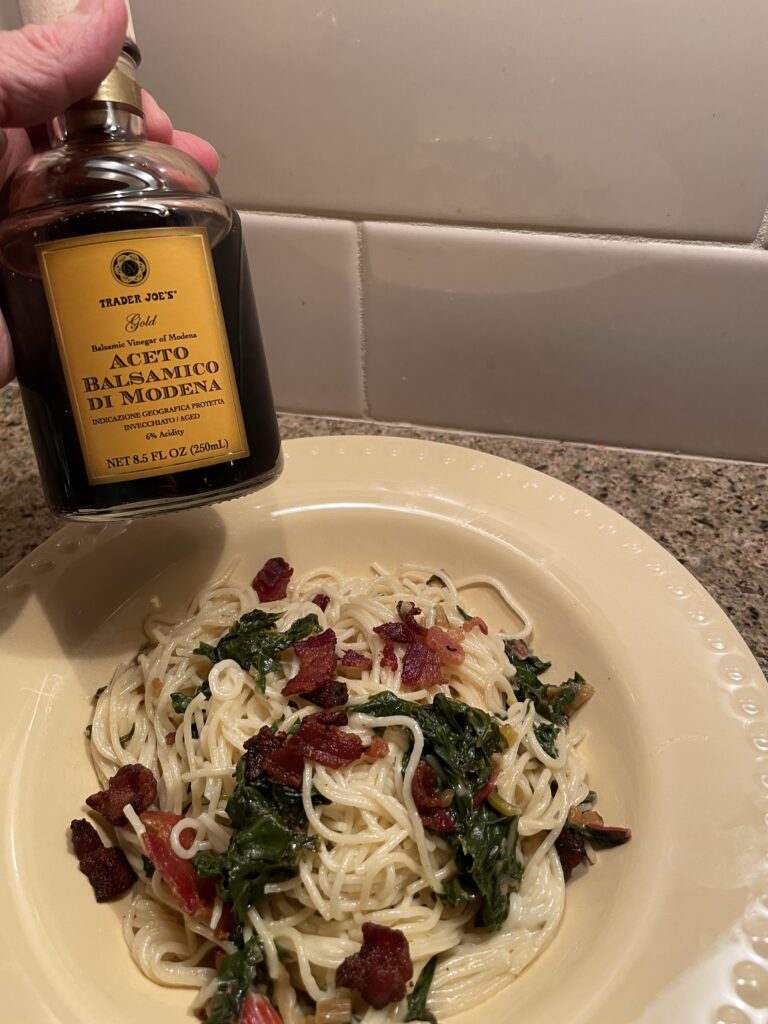
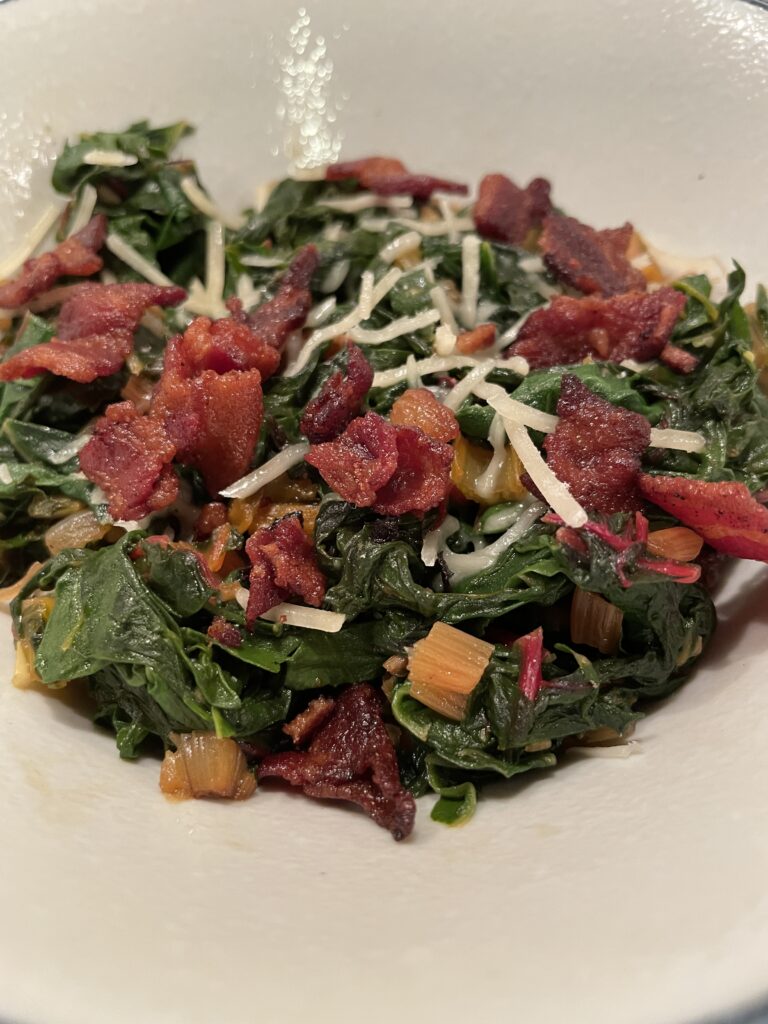
I included the second picture because I prefer Swiss chard with a few garnishes. I sauteed it with an onion, and covered the top in bacon and Parmesan.
Leave a Legacy with the Meal
Whatever recipe you create when cooking Swiss chard, savor the outcome! Have fun with it, build memories over a plate of it, and leave a legacy with those who enjoy your creative recipes! I’ve seen the results in my own family of doing these things. It also gives my kids the confidence to try new things, understanding that they may not always like the outcome of their kitchen creations. However, they are finding that they are far more capable of cooking masterpieces that they once thought. They are also discovering a love for flavors and new blends of flavors. Clearly, this demonstrates there’s more at stake than just a meal!
If this recipe appeals to you, check back! I’m so looking forward to sharing recipes with produce that is fresh and right out of the garden!
Are you considering planting a garden? Check out our lastest DIY, “How Do I Plant a Garden?”
Stay tuned for more cooking tips and recipes!